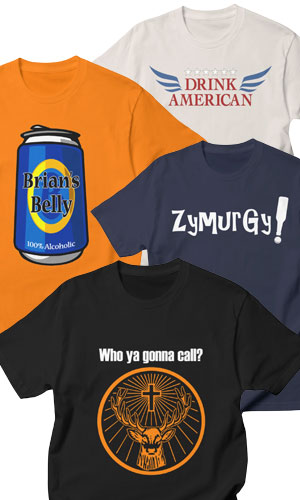Will a beer left sealed in the bottle ever expire? The short answer is yes. But the longer answer is that it depends. We’ve all wondered about it, TheKitchn recently looked at the science a bit… and it got us thinking…
Like wine, they say, beer continues to age and change over time. Boston Beer and Anheuser-Busch have drilled into our heads that “fresh” beer tastes better… and they are right. Flavors start to fade, oxidization occurs, and the protein structure that gives the beer body starts to break down. But it doesn’t actually expire, spoil or become unsafe to drink. It will just start to taste funny.
According to The Professor’s House, there are four things that impact a beer’s shelf life. Pasteurization means the beer is heated for a little while to kill microbes in the brew. This can make the beer’s taste deteriorate faster. Typically, canned beer is pasteurized. A second process is sterile filtration, in which the beer passes through a mechanical system that removes any yeast or hops still present in the brew which could continue a chemical reaction. A third is bottle conditioning, which will let yeast remain in the bottle, and prevent some oxidation that will lower the beer’s quality.
The fourth is the recipe for the beer itself. Beers with higher alcohol content or more hops in the recipe will take longer to lose its freshness than beers with lower alcohol or hops. Most craft beers stored at a stable temperature and out of the light will be good for about a year before starting to turn. The “good stuff” like bottle-conditioned ales with an alcohol content of 9% or higher, can be aged for longer than a year. They experience the same breakdown in flavor and structure, but this has been calculated to actually improve the flavor of the beer.
However, your typical Budmillors have a short shelf life of approximately six weeks. You can increase that by keeping it out of the light and storing it at a temperature between 55 and 60 degrees F–and get your shelf life up to 4 to 6 months–or preferably in your fridge at around 38 degrees F, where you can get 8 to 12 months out of them. You can immediately increase your odds that the beer won’t be stale by buying cold beer, not dusty display bottles and boxes.
Beers from microbreweries usually lack the pasteurization and filtering facilities that the large breweries have, so these beers have a much shorter shelf life–buy and drink them immediately (no problem here.) You’ll also note that most craft beers use dark colored bottles to keep out the sunlight–beer’s natural sworn enemy. The aforementioned bottle-conditioned ales (“living beer” with yeast left-over from the brewing process in the bottle) can stay for up to 5 years when stored properly.
Visit TheKitchn.com for the impetus of this article, and ProfessorsHouse.com for more information, including some helpful hints on buying beer.


